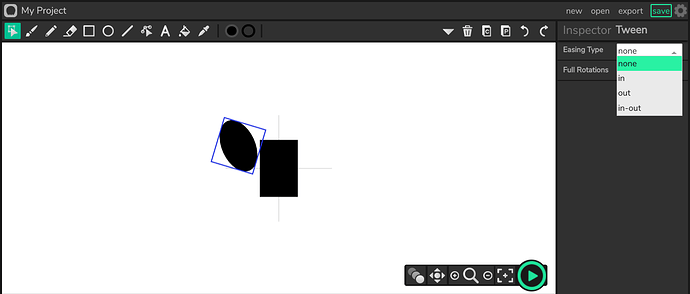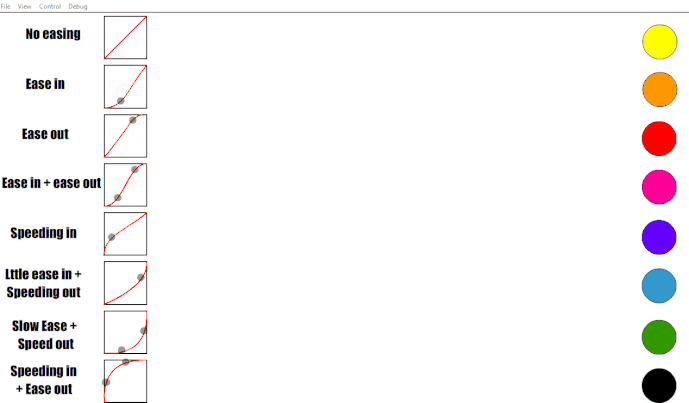I just noticed that there was a tween inspector (I’m kinda dum for noticing about it NOW, although I experimented with tweening a lotta times before ). Is this a new thing? And what do the choices ( “in,” “out,” “in-out,” and "none) mean? Sorry for this dum question, and thanks in advance!
Hi there!
The easing is irreplaceable part of the animation process. It makes the objects move as in the real world, affected by gravity and the laws of physics. No objects start and stops to move at the same speed. It needs to ease in or ease out or most of the time, both. Ease In, means the object will gradually slow down before it catches up back to its original speed. Ease Out means the object will slow down, before it stops, usually, and Ease in + out means the object will start slow, then move with its base speed, and before it stops, it will slow down again. As a car in real life.
Here’s a part of an exercise we use to teach kids the basics of easing. I hope it helps to visualize the process:
PS: Don’t mind the diagrams, they are meant to be used as a custom easing in Flash and Adobe Animate.
well, there is a great video about the 12 principles of animation on YouTube (by Alan Becker). if you watch the video, there is a part talking about slow-in and slow-out.
simplified, “in” makes it slow and picks up speed, “out” starts out fast and slows down at the end, and “in-out” starts slow, picks up speed and then slows down.
you can use “in-out” for a car, “out” for a mouth, and “in” for a falling ball. the use is unlimited!
dang it, i was too late.



